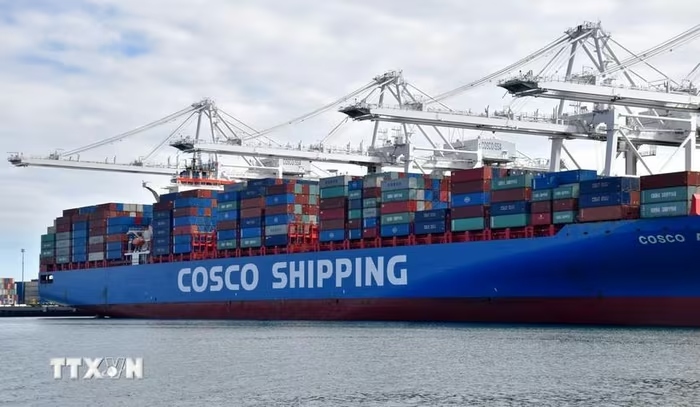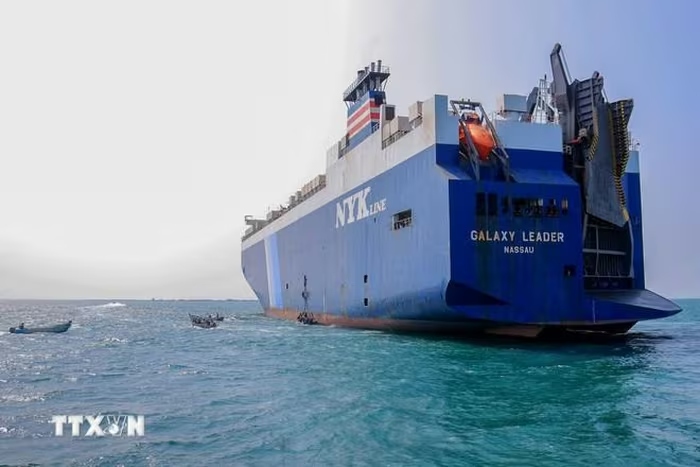
(Photo: THX/VNA)
While most of the world’s cargo ships still rely on heavy fuel oil — a thick, polluting type of “bunker oil” — the global shipping industry is facing a deadlock in its pursuit of the Net Zero carbon emissions target by 2050.
As solutions such as electric batteries, biofuels, or green ammonia remain insufficient to meet global shipping demands, many experts are turning back to a technology once hailed as the “future of the oceans” more than half a century ago: nuclear energy.
From the dream of NS Savannah to decades of oblivion
On July 21, 1959, the launch of the NS Savannah in the United States marked a historic milestone as the world’s first nuclear-powered commercial ship. Expected to usher in a new era of maritime transport, Savannah operated not on diesel engines but with a pressurized water reactor (PWR) that converted the heat from nuclear fission into steam to drive turbines and propellers.
During its eight years of operation, the ship became a symbol of the “Atoms for Peace” program. But by 1970, the Savannah was forced to retire. The $46 million construction cost (equivalent to $500 million today), high operating expenses, special crew training requirements, and persistent safety concerns led many ports to deny it entry.
Three other nuclear ships followed — Otto Hahn (Germany), Mutsu (Japan), and Sevmorput (Russia) — but none managed to overcome the economic and psychological barriers surrounding nuclear technology. As a result, the concept gradually vanished from the map of civilian shipping.
Pressure from Net Zero targets and the revival of an old idea
Today, maritime transport accounts for 80% of global trade and about 3% of global CO₂ emissions — roughly equivalent to Japan’s total emissions. The International Maritime Organization’s (IMO) goal of achieving net-zero emissions by 2050 is forcing the sector to seek more radical solutions.
In this context, some scientists believe that nuclear power — long forgotten for half a century — could represent the most realistic way forward.
Professor Jan Emblemsvåg of the Norwegian University of Science and Technology, head of the NuProShip project, stated: “Nuclear-powered ships emit virtually no CO₂ and can operate for years without refueling. This offers major advantages in both environmental sustainability and operational efficiency.”
Historical data supports this: the NS Savannah could circle the globe 14 times with a single fuel load — a figure far beyond that of any modern oil-fueled vessel. This advantage means ships could travel faster, remain independent from fuel supply chains, and significantly reduce long-term operating costs.

(Photo: AFP/VNA)
New-generation technology and a second chance
Unlike the 1960s, today’s nuclear technology has advanced dramatically. Small Modular Reactors (SMRs) and Generation IV reactors are now designed to be more compact, safer, and more efficient.
According to Mark Tipping, an expert from Lloyd’s Register: “Modern reactors are built with a ‘fail-safe’ principle, meaning that if an incident occurs, the system automatically shuts down the reaction without human intervention.”
Preliminary studies suggest that nuclear fuel could be up to 40% cheaper than heavy oil, and SMRs could be mass-produced to lower costs further. Norway’s NuProShip project has evaluated more than 80 reactor types and selected three of the most promising designs for maritime applications. However, none have yet entered real-world testing. Building manufacturing capacity and establishing an international legal framework remain major challenges.
In 2024, the IMO began updating its code for civilian nuclear-powered ships — a framework that has remained unchanged since 1981 and only applies to PWR technology. This process is expected to take years and must address complex questions: How to prevent radiation leaks if a ship sinks? How to handle spent nuclear fuel? And how to protect against nuclear terrorism or smuggling of radioactive materials?
Additionally, classification societies such as Lloyd’s Register (UK) and ABS (US), as well as ports and insurers, must update their own regulations before accepting nuclear ships to operate or dock.
A distant prospect — but one that cannot be ignored
Although some experts believe civilian nuclear ships could set sail in the early 2030s, in reality, this process may take much longer. Developing reactors, completing legal frameworks, training specialized personnel, and — most importantly — rebuilding public trust could take decades.
Nevertheless, in the global Net Zero landscape, nuclear power remains one of the few options capable of delivering stable, high-density, and zero-emission energy. If managed safely, it could become the “missing piece” that helps the maritime industry achieve carbon neutrality.
As Professor Emblemsvåg remarked: “No energy solution is perfect. But if humanity is serious about cutting emissions, nuclear energy deserves a place back on the table.”
Sixty years after NS Savannah faded into obscurity, the world may now face a second chance to realize that dream — this time, not for technological ambition, but for the survival of our planet. The question is no longer “Is nuclear suitable for maritime transport?” but rather, “Do we have the courage to try again — safely, transparently, and effectively?”
— VNA